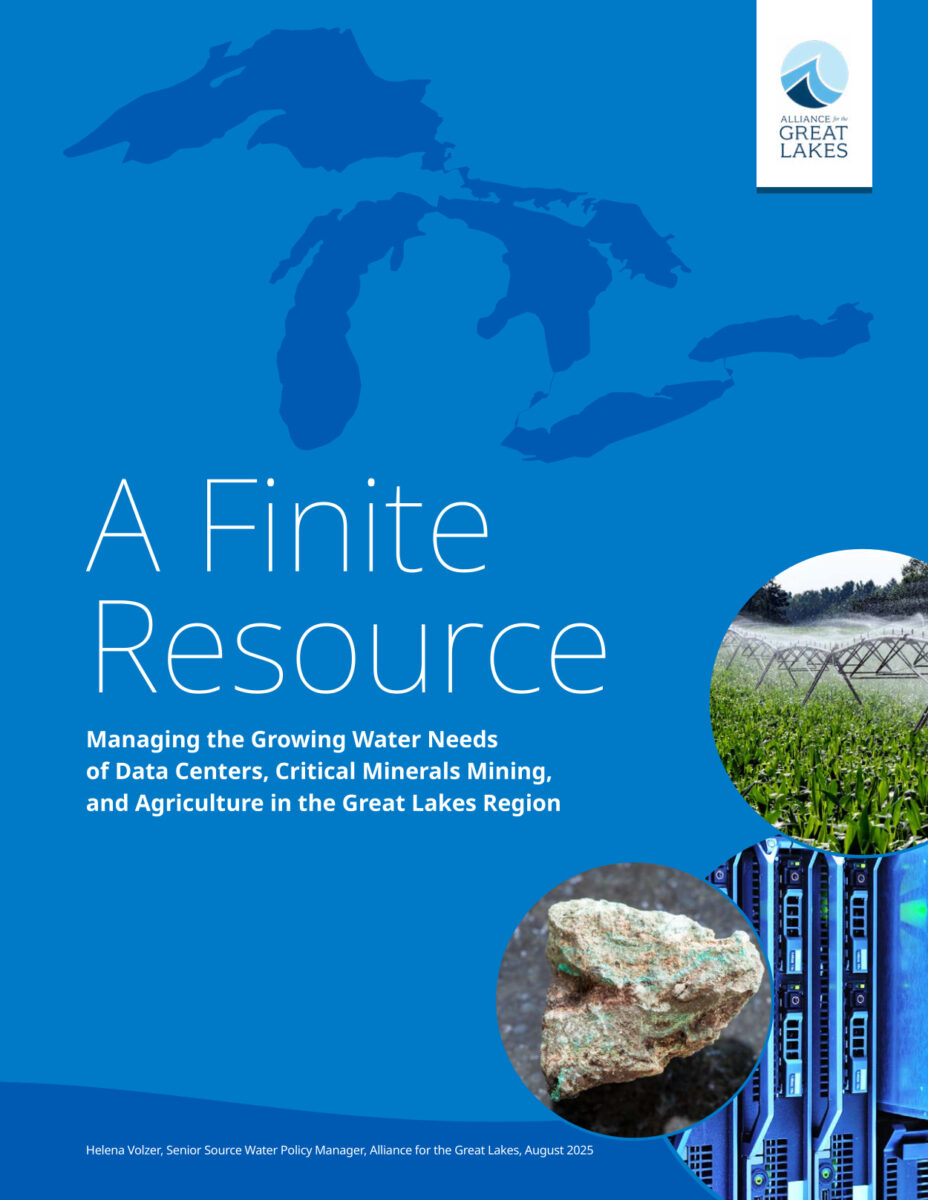CHICAGO, IL (August 20, 2025) – The Great Lakes region faces the prospect of water shortages, groundwater conflicts, and contaminated aquifers as demand sharply increases from large water users such as data centers, agriculture, and critical minerals mining. A new Alliance for the Great Lakes report details how access to water in the region will be undermined in the coming years if serious planning, policy, and regulatory actions are not taken. Some places in the region are already seeing these conflicts play out.
While the Great Lakes Compact prohibits diversions of Great Lakes surface and groundwater outside the basin, Great Lakes states are facing increasing and unprecedented demand from heavy water-using sectors. Increased water demand is also rising at a time when climate change is scrambling precipitation patterns and limiting the ability of groundwater aquifers to recharge. Between 20 to 40% of the Great Lakes’ water budget – the total water flowing in and out of the system – originates as groundwater.

“Industries like data centers and semiconductor chip manufacturing are choosing to locate in the Great Lakes region, in part because of its water resources along with state laws and tax incentives that encourage investment but don’t consider limited water resources. The region is simply not prepared to manage the competing and overlapping demands that may soon lead to more conflict over water resources,” said Helena Volzer, Alliance for the Great Lakes Senior Source Water Policy Manager and author of the report.
The report – A Finite Resource: Managing the Growing Water Needs of Data Centers, Critical Minerals Mining, and Agriculture in the Great Lakes Region – details how a single hyperscale data center can use more than 365 million gallons of water a year, equivalent to what 12,000 Americans use in that time. Fueled by a transition to greener and cleaner technologies, the water-intensive critical minerals mining industry will also require large volumes of water. Due to hotter and drier summers, irrigation is now increasingly beginning to be used for agriculture.
“If states, local governments, and economic development agencies do not begin incorporating water availability and demand into their decision-making processes, it may lead the region down a dangerous, unsustainable, and inefficient water use path that impacts drinking water supplies, businesses, and food production,” Volzer said.
While the report explores the challenges facing Great Lakes’ water use, it also offers a suite of potential solutions including:
- Require disclosure of proposed water and energy use to inform decision-making. There are no water use reporting or tracking requirements for data centers that purchase water from municipal water supplies, so less then ⅓ of data centers even track water use.
- Set energy and water conservation and efficiency standards for hyperscale data centers and large water using industries.
- Conduct regional water demand studies and groundwater mapping to determine capacity as part of ongoing conservation programs and for use in economic development decision-making.
- Eliminate sales and use tax incentives specific to data centers.
- Examine consumptive use permit thresholds to determine if they are appropriate in the face of both new demand, simultaneously converging demands, and climate change.
- Revise state groundwater management laws to allow state agencies to curb groundwater use where adverse groundwater impacts are likely but have not yet occurred.
The report details how the states are fortunate to have the existing Great Lakes Compact, which is a solid foundation and cooperative agreement on which these solutions can build.
###
Contact: Don Carr, Media Director, dcarr@greatlakes.org
